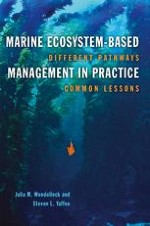2017 | OriginalPaper | Chapter
5. Motivating Engagement in Voluntary Programs in Narragansett Bay and the Albemarle—Pamlico Estuary
Authors : Julia M. Wondolleck, Steven L. Yaffee
Published in: Marine Ecosystem-Based Management in Practice
Publisher: Island Press/Center for Resource Economics
Activate our intelligent search to find suitable subject content or patents.
Select sections of text to find matching patents with Artificial Intelligence. powered by
Select sections of text to find additional relevant content using AI-assisted search. powered by
